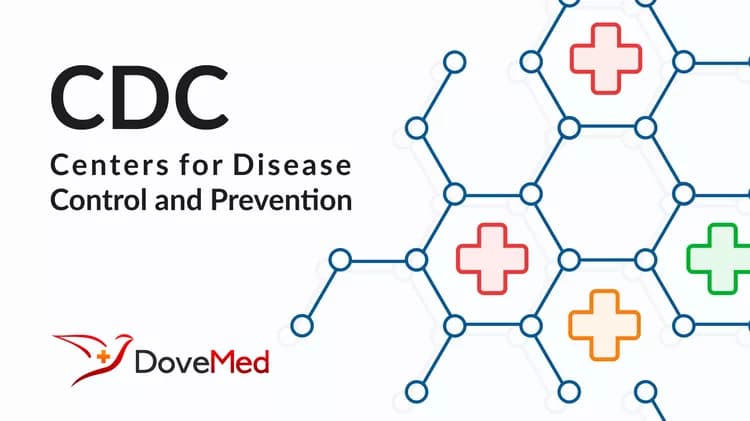
New data suggest increases in HIV infection in select populations
Number of U.S. AIDS Cases Remain Stable After Recent Declines
New data suggest increases in HIV infection in select populations
BARCELONA - U.S. AIDS cases and HIV infections appear roughly stable overall; however, the overall stability may be masking increases in HIV infections among some populations of heterosexuals as well as gay and bisexual men, according to Dr. Ronald Valdiserri, Deputy Director of the National Center for HIV, STD, and TB Prevention with the U.S. Centers for Disease Control and Prevention (CDC) in Atlanta, Georgia.
Dr. Valdiserri released the latest U.S. data on diagnosed AIDS cases through June 2001 and HIV diagnoses in 25 states from 1994 to 2000 at today's American Medical Association media briefing in Barcelona, Spain.
The most recent CDC data confirm a trend of continued stabilization in AIDS cases that began in mid-1998. Between June 1998 and June 2001, roughly 10,000 AIDS cases have been diagnosed each quarter. Prior to 1998, AIDS cases had declined dramatically with the availability of highly active anti-retroviral treatment.
According to Dr. Valdiserri, the lack of additional progress is likely due to several factors, including the substantial number of infected individuals who are either unaware of their HIV infection or not receiving medical care (an estimated 400,000-500,000 Americans), treatment failure, and difficulty adhering with complex regimens that often cause severe side effects.
The recent data demonstrate that HIV diagnoses in the 25 states also stabilized, at roughly 16,600 annually between 1998 and 2000. (HIV trends were only examined in the 25 states with longstanding HIV reporting.) Dr. Valdiserri cautions that the 25 state data are not representative of all states. For example, Latinos account for a low proportion of cases in these states, but they are disproportionately impacted on a national level.
Closer examination of the 25 state data, however, demonstrates a "deceptive stability" in HIV diagnoses according to Dr. Valdiserri. During the seven-year period examined, the majority of HIV diagnoses occurred among gay and bisexual men (43 percent), followed by individuals infected heterosexually (27 percent) and injecting drug users (23 percent).
From 1998 to 2000, HIV diagnoses among heterosexuals increased 10 percent, continuing the slow, steady increase seen since 1994. Among the heterosexual HIV diagnoses, African-American women accounted for almost 50 percent of cases. Among gay and bisexual men, white men (52%) and African-American men (40%) represented the vast majority of reported HIV diagnoses.
Dr. Valdiserri also summarized other recent data indicating high levels of HIV and increasing rates of STDs among gay and bisexual men in multiple cities throughout the U.S.
"Taken together, these data point to the urgent need to stem the spread of HIV among gay and bisexual men and heterosexuals in many areas of the country, especially in those African-American communities most dramatically impacted," stressed Dr. Valdiserri.
New CDC data from a multi-state study suggest that the majority of HIV-positive individuals are sexually active. Of 2,333 HIV-positive individuals interviewed, 67 percent reported being sexually active and 33 percent report being abstinent. Among the sexually active individuals, condom use at last sexual encounter ranged from 57 percent to 75 percent, depending upon the gender and type (i.e., steady versus non-steady) of sexual partner. The study interviewed individuals diagnosed with HIV and AIDS in 2001 at 16 sites.
"We have more people living with HIV than ever before in the United States," Dr. Valdiserri said. "Therefore, we have a growing need for prevention services among HIV-positive individuals, the vast majority of whom - as these data illustrate - are sexually active and may need assistance in establishing and maintaining safer sex behaviors."
In addition to growing HIV prevalence, Dr. Valdiserri pointed to the impact of the epidemic among poor and disenfranchised populations and reduced concern about HIV infection due to treatment optimism, as key challenges in fighting today's HIV epidemic.
"We have to renew HIV prevention in the United States," Dr. Valdiserri said. "We need to get back to the level of collaboration, commitment, and concern that we saw in the first decade of the epidemic. We need to realize that we have to develop new solutions, because this is a very different epidemic from the one we've seen in the first two decades."
#
Editor's Note: Dr. Valdiserri has no financial interests, arrangements, nor affiliations that could be perceived as a real or apparent conflict of interest in the context of the subject of this presentation to disclose.
Related Articles
Test Your Knowledge
Asked by users
Related Centers
Related Specialties
Related Physicians
Related Procedures
Related Resources
Join DoveHubs
and connect with fellow professionals

0 Comments
Please log in to post a comment.